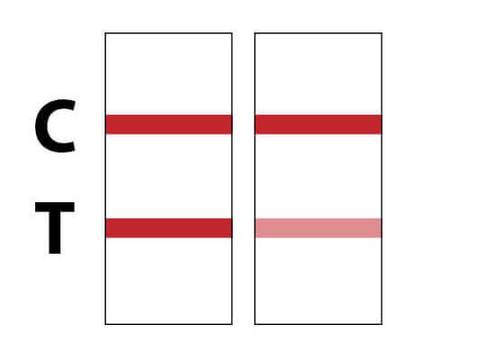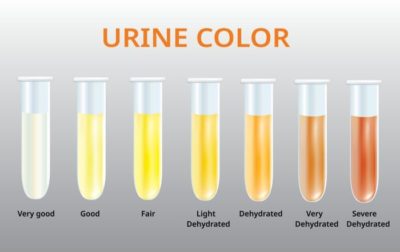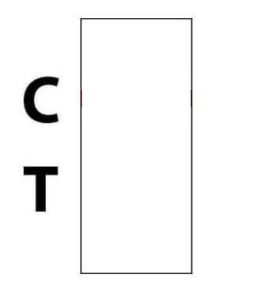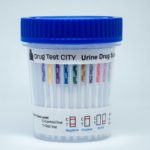
Most people are familiar with false positives on drug tests, but are unaware of false negatives. What is a false negative on a drug test, what can you do to prevent them and what should you do if you identify one?
What is a False Negative Drug Test?
A false negative is any time that under normal circumstances a drug test would be positive for an individual but for some reason results are negative. An example would be a patient that is prescribed Oxycodone that takes his medication consistently as prescribed, but has a negative drug test during his doctor visit.
In most cases this is caused by the patient either purposefully or accidentally altering their urine sample. The most common false negative drug test is due to water loading.
False Negatives From Water Loading & Adulteration
Water loading is the process where a person drinks an excessive amount of water prior to giving a sample. Urine that is clear with no yellow tint is usually indicative of water loading. You will need to perform separate adulterant tests for Creatinine, pH and protein levels to prove that a test has been diluted by a subject ingesting excessive amounts of water.

Without adulteration testing pure water will show negative on a drug test assay because the tests are only meant to detect the presence of a certain drug or metabolite in a substance, not to detect if the substance is a valid sample. Subjects can simply add water to their urine, but to fool a witness they will ingest an excessive amount of water to dilute the urine that comes from their own body.
There are several products available that claim to help users pass urine drug screens. These products range from nothing more than fortified tea that dilutes your urine to products that claim to seal in fat cells for several hours. Many of these products will speed up the timeframe which a person can pass a urine screen even if it’s for no more reason than they’ve diluted their urine.
Improper Drug Test Selection
A mistake made by organizations conducting drug tests is improper test selection. Every organization will have their own considerations when choosing a testing device, but some drug tests will not detect every illicit substance that people assume.
Semi-Synthetic Opiates
Many times a doctor prescribes their patient oxycodone or another semi-synthetic opiate, but uses a 5 panel drug test that only has a test for opiates. The doctor has seen positive tests for opiates from his patients that are prescribed oxycodone, but his new patient tests negative. One study found that oxycodone was detected in 12% of opiate immunoassay tests, and many other synthetic or semi-synthetic opiates also require a special test for accurate results.
Benzodiazepines
Most assays for benzodiazepines detect their presence in the urine by testing for nordiazepam and oxazepam, the main metabolites of most benzodiazepines. Agents that follow a different metabolic pathway, such as triazolam, alprazolam, clonazepam, and lorazepam, have poor cross-reactivity with the assay due to the absence of these metabolites and thus frequently produce false-negative results. Some doctors prescribe diazepam, oxazepam, and temazepam instead to reduce lab confirmations.
False Negatives From Very High Cutoff Levels
If your drug tests have high cutoff levels it is more likely for a user that has recently ingested drugs to produce a negative result.
The National Institute of Drug Abuse and the Substance Abuse and Mental Health Services Administration publish recommended cutoff levels for drug testing which most companies follow. Dozens of other federal agencies publish their own standard cutoffs (everyone from the Department of Transportation to the Nuclear Regulatory Commission) that are usually based off federal recommendations.
Even though the federal government publishes their own guidelines laboratories and manufacturers can create products that use whatever cutoff level they deem appropriate and the federal guidelines do change from time to time.
For example opiates and morphine have two widely used cutoff levels since the early 2000s because so many people were failing employment tests because the popularity of poppy seed muffins. The recommendation soared from 300ng/ml to 2000 ng/ml. The majority of tests will use this recommendation to stay compliant with as many federal regulations as possible, but the high sensitivity tests are still available.

In practice there is no right answer. Some regions may have popular restaurants that sell poppy seed muffins, and some industries may have a high percentage of clients that anticipate testing and use gray-hat adulteration methods to get their levels under the cutoff.
Human Error
We advertise our drug tests as being 99% accurate, but in any situation that involves a human there is a possibility of introducing human error. A technician could mislabel tags, forget to confirm the temperauture on a sample or give a patient an opportunity to switch out a sample altogether.
Human error is even more likely in a laboratory where a technician has to prepare an assay, control variables, process and record information and interpret results. Never count out human error entirely and implement procedures that can help reduce the likelihood of human error.
Faulty Device
Since the consequences of a failed drug test can be so severe t here is a great deal of work and investment that goes into quality control for drug test devices. Still there are always some faulty tests or batches of tests that slip through.
If you have several tests in a row give unexpected results you should consider that the tests may be faulty. It’s very cheap and easy to use a 2nd drug test if a subject says that their results aren’t accurate.
Our drug test cups are designed to alert the user when there is a problem with the device itself. The control line can alert you to tampering, a faulty test and some forms of improper collection.

Keep in mind that a 12 panel drug test is actually 12 individual tests; most of the time a faulty device means only one of the strips is faulty. A certain percentage of faulty tests is expected in this industry, which is why we offer a 100% satisfaction guarantee that covers any faulty devices and any additional tests you use to troubleshoot a possible faulty test.
Other Anomolies
There are times when all of the devices are functioning properly, everyone did everything they were supposed to do and a sample is valid in every way and still there is a false negative drug test result.
The Hook Effect
One rare cause which has been addressed by manufacturers in recent years is the “hook effect” where there is so much of a drug present in the urine that there are no more binding sites left on the antibody. This can cause a lower apparent level which can lead to a negative result if it’s below the cutoff level.
Drug Degradation
One benefit of using a drug test cup is that the receptacle is also the test. There is no lapse in time between collection and testing. In a busy medical office technicians may become distracted or intentionally multi task when working on test results.
When shipping to a lab it could be even more time between collection and testing. The time in transit and any time that the shipment sits in the lab without proper refrigeration is more time for the sample to naturally degrade.
Most metabolites are stable for the short periods common in drug testing, but others are not stable especially when subjected to temperature changes or extremely high temperatures.
One example is 6-monoacetylmorphine (6-MAM), a metabolite of heroin. In the body heroin is metabolized to 6-MAM, which then metabolizes to morphine. 6-MAM lacks stability, is subject to in vitro hydrolysis and also continues to metabolize into morphine even after the urine leaves the body. One study showed that within 7 days at room temperature a urine sample that was positive for 6-MAM had hydrolyzed completely into morphine.
Limiting False Negatives on Drug Tests
Understanding that a false negative is a possibility and the likely causes is the first step in stopping them. Collecting and storing data can be an important part of investigating unexpected or suspicious results.
With enough knowledge and proper analysis many drug test results that are contradictory to expectations can be reconciled and explained. Here are some other tactics you can use to limit the likelihood of false negatives in your drug testing program.
- Institute procedures and policies to combat water loading and adulteration
- Use a 12 panel drug test to cover many of the synthetic and semi-synthetic opiates
- Understand the cutoff levels and detection times for the tests you use
- Institute policies and procedures that decrease the likelihood of human error
- Report faulty tests to the manufacturer or retailer

